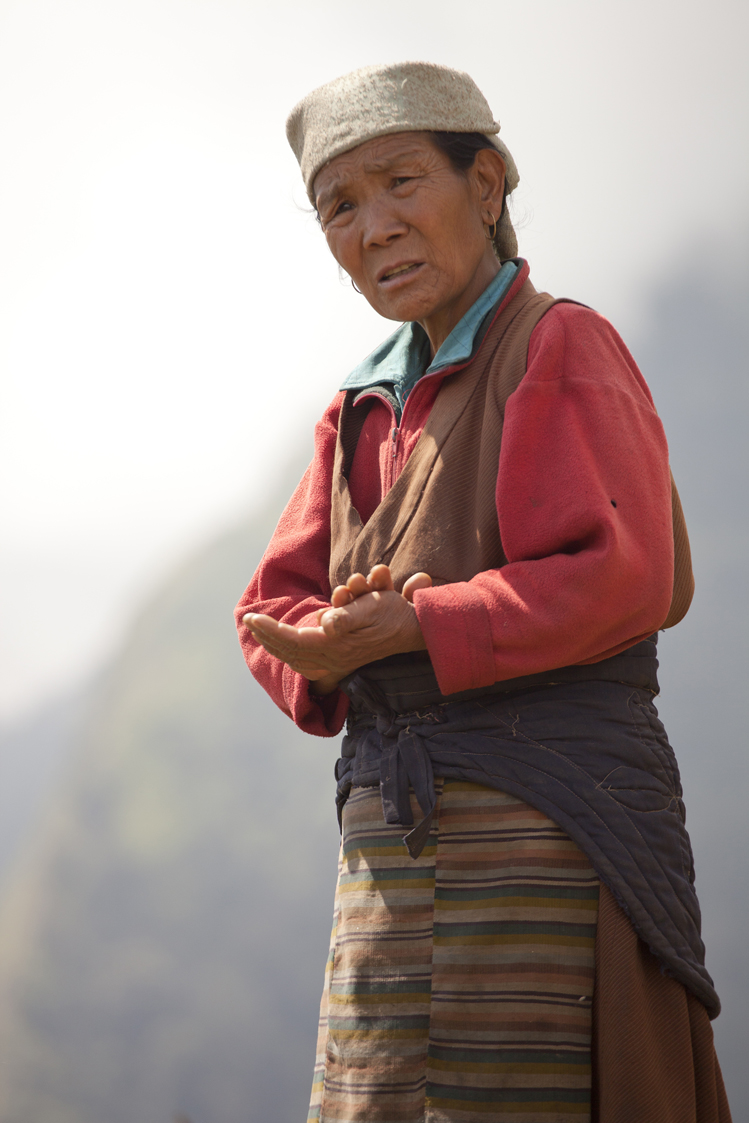Who are the Sherpas
The Origin of the Sherpa Nation
The term Sherpa or Sherwa is derived from the Sherpa words Shyar ("east") and Pa ("people"), which refer to their geographical origin from eastern Tibet. Many centuries ago, they crossed the main Himalayan ridge and settled in the southern foothill areas of Nepal – in the Solo Khumbu region below Everest, in the Rolwaling Himal, and Langtang. However, they can also be found in China, Bhutan, and the Indian regions of Sikkim and Darjeeling.
Sherpas have their own language, which belongs to the southern branch of Tibeto-Burman languages. Today, however, it is unintelligible to Tibetans. Interestingly, during an expedition in Pakistan's Baltistan, which is about 1,000 kilometers away from the Sherpas' current home in the Solo Khumbu region, Sherpas hired as mountain guides for Western expeditions got along very well with the locals. The Balti language is very similar to Sherpa, with most words being nearly identical or containing the same root. On the other hand, today's Nepali is diametrically different from the Sherpa language. However, most Sherpas speak Nepali, and they are also generally familiar with basic English. During the 2011 census in Nepal, just over 300,000 Sherpas were recorded. The picturesque town of Namche Bazaar (3,350 meters above sea level) is considered the capital of the Sherpas. It is the vibrant heart of the Khumbu Valley, full of shops, Western-style cafes, stylish hotels, and a marketplace that has been the center of trade for centuries, where caravans from Tibet or the fertile valleys of Nepal exchanged goods.

Mountaineering
The first expeditions to Everest at the beginning of the 20th century could not help but notice the remarkable resilience of the native Sherpas in withstanding high altitudes. Initially, they were used as porters to carry materials up the mountain, but later they became companions on the mountain itself. Perhaps the most famous Sherpa is Tenzing Norgay, who, together with Edmund Hillary, was the first to reach the summit of Mt. Everest. Today, it is not uncommon for Sherpas to hold the international UIAGM mountain guide license.
They have become not only high-altitude porters but also prominent mountaineers in their own right. The classic ascent route to Everest from the southern side is climbed and fixed every year exclusively by Sherpa climbers, known as the "Icefall Doctors." Until they have completed their work, no other ascents to the mountain are allowed. Elite Sherpas who accompany clients all the way to the summit earn around $5,000 to $6,000 for two months of the expedition, plus a special bonus for successfully getting a client to the top.
Thanks to their assistance to tourists and commercial expeditions, and the enormous boom in tourism in their homeland, one of the poorest regions in the world has become an exceptionally prosperous community by Nepali standards. Solo Khumbu has experienced rapid development over the past two decades. The money from massive tourism is visible almost everywhere, and in tandem with it, the quality of tourist services throughout the region has risen.
A sherpa does not mean a carrier or porter
Sherpas originally started as porters for the first Himalayan expeditions, but today, the porters in the Khumbu Valley are mostly other ethnic groups from the lower areas of Solo Khumbu. The Sherpas themselves are primarily involved in the tourism business, working as guides, high-altitude porters for expeditions, hotel owners, or running restaurants and tea houses. Overall, the Sherpa valley of Khumbu has experienced massive growth and unprecedented wealth.
Religion
The Sherpas follow Tibetan Vajrayana Buddhism, primarily the Nyingma and Gelugpa schools, with the Dalai Lama being the main representative of the latter. Almost every village has a monastery (referred to as a gompa in Sherpa), and in every home, you will find Buddhist altars and photos of the Dalai Lama. The center of Buddhism in the Sherpa valley of Solo Khumbu is the Tengboche Monastery. It was destroyed in the great earthquake of 1934, then rebuilt, and eventually burned down in 1989 due to an electrical short. Four years later, it was rebuilt once again. It is a popular stop for expeditions, where climbers often visit before their dangerous ascent to perform a puja (a Buddhist ceremony) and ask for blessings from the spiritual leader of the monastery—the Lama.
Throughout all Sherpa regions, there is no shortage of Buddhist elements such as stupas, chortens, and what are called mani walls—stone pathways inscribed with the mantra Om mani padme hum. Colorful Tibetan prayer flags with printed mantras are also ubiquitous. The wind carries the mantras, and with them, blessings to all beings. It is not uncommon to meet locals with ritual prayer wheels or with Buddhist versions of rosaries in hand, chanting mantras. These are not prayers in the traditional sense but more like well-wishes. However, this topic could fill an entire article on its own.

Curiosities
Many Sherpas are named after the day of the week. Pasang means Friday, and Pemba means Saturday. This tradition is believed to give the child the protection of the deity of that particular day. Many Sherpa children also receive virtuous names, such as Lhamo (which means "beautiful"), Gyaltshen (meaning "brave speech"), or Tenzing (which signifies "steadfastness and support"). All Sherpas have the surname "Sherpa," which often leads to confusion with different people having the same last name.
A typical main dish for the Sherpas is Dhal Bhat—white rice with vegetables, potatoes, or whatever the garden provides, all topped with a thin lentil soup. To an outsider, this might seem like a bland meal, but the locals can never get enough of it. An interesting custom is that the food is constantly added to the plate by the housewife, called Didi (which means "older sister"), until the eater starts to refuse further servings. Sherpas happily say: "Dhal Bhat - 24-hour power!"
Overall, the Sherpas are very friendly, humble, and willing to help.
Mišo Gabriž
